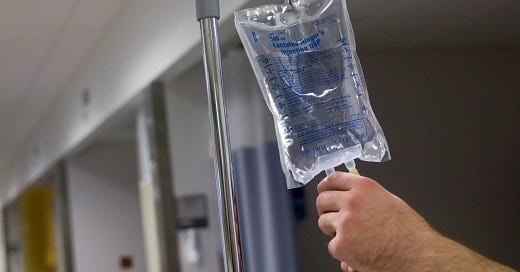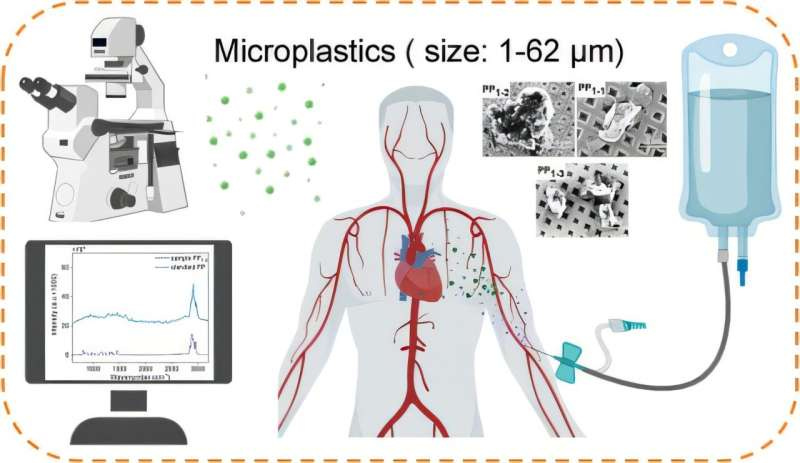STUDY ANALYSIS: Medical Bags and Microplastics
Medical equipment can be a significant source of exposure to harmful microplastics and toxic chemicals, as a new study shows
Medical bags used for procedures including blood transfusions and rehydration release significant quantities of microplastics directly into the blood, according to a new study.
This shouldn’t really come as a surprise—where there’s plastic, there’s microplastics and also their even trickier, even smaller brethren nanoplastics—but even so, these studies are still informative and worth discussion.
The researchers behind the study note that it’s been known since the 1970s that IV fluid bags can contain solid particles, but there has been little research to investigate exactly what those particles are.
Since the bags are made of plastic, the researchers sensibly thought plastics would be among the solid particles released into the fluid and therefore directly into the blood of the recipient.
They took two different brands of saline bags and dripped the contents into glass containers, then filtered the contents for analysis. They counted a portion of the individual plastic fragments they found and then used that number to estimate the total amount in each bag.
Here’s what they found:
The researchers discovered that both brands of saline contained microplastic particles made from polypropylene—the same material as the bags—which suggests that the bags shed microplastics into the solutions. They estimated that each bag of infusion fluid could deliver about 7,500 microplastics directly into the bloodstream. This figure rises to about 25,000 particles to treat dehydration or 52,500 for abdominal surgery, which can require multiple IV bags.
Obviously, the more medical bags you end up using, the greater your exposure.
Currently, there’s no way to avoid the risk. If you have to use a medical bag, you’re going to get a big dose of microplastics.
The researchers make a number of recommendations. First they recommend keeping the bags away from UV light and heat, both of which are known to increase the rate of microplastic-shedding. Second, they suggest tiny micrometer-level filters could be added to the bags to remove the particles during use.
Like I say, this isn’t earth-shattering news, but it draws our attention to a neglected source of exposure to harmful microplastics and toxic chemicals.
It’s been known for some time, actually, that infusions—and exposure to medical equipment more broadly—can have serious negative effects because of transfer of toxic chemicals.
Keep reading with a 7-day free trial
Subscribe to In the Raw to keep reading this post and get 7 days of free access to the full post archives.






